Finding your way in the world can be daunting at the best of times. When you’re dumped into the middle of nowhere with no directions, well, it can be more than a challenge.
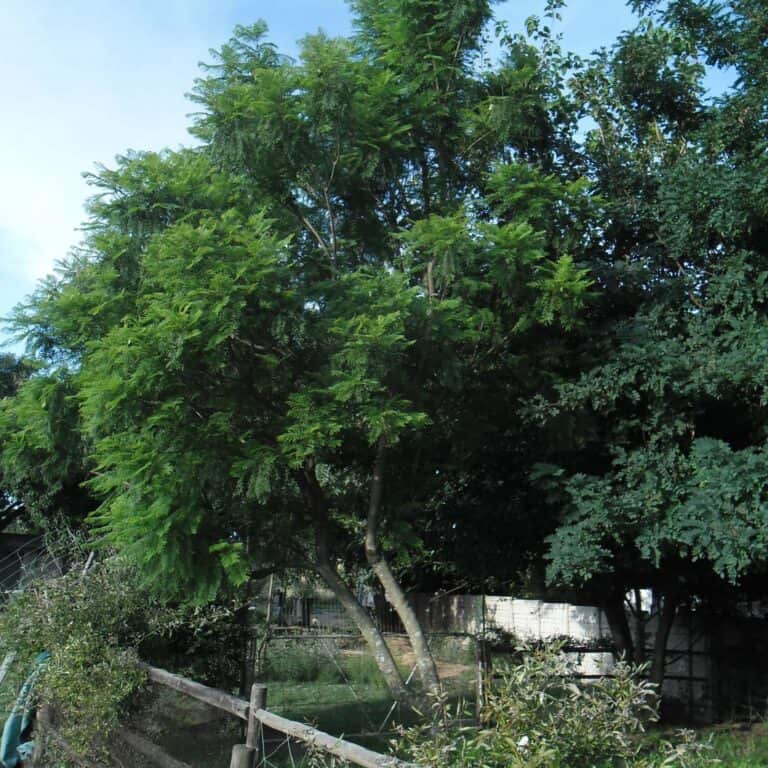
Imagine a day trip turning into a survival exercise, earthquake, tsunami, flash flood, raging storms, tornado. All of these can turn a normal day into the fight of your life.
Here, you will need your accumulated knowledge plus the applied knowledge, you have practiced and honed to a fine edge. Even if you are just starting out, you do know stuff; you have skills and a will to live. Your life and those with you may well depend on it.
Every year, hundreds of people get lost going for a walk in familiar surroundings or get into trouble on a planned hike or similar excursion.
Getting disorientated in a government forest is one wrong turn away from being truly lost. It’s much more likely than a more exotic situation, yet just as life-threatening.
Table of Contents
This Kept Me Alive
As a professional soldier, military contractor infantry, a Survival Evasion Resistance and Escape or SEREs instructor, and professional hunter, I have often found myself in geographical areas that were outside of my comfort zone, places I had no real knowledge of.
The jungles of the Congo and the deserts of the Sahara are just some of the colorful destinations I have visited. Hunting the plains of Africa is a magnificent adventure; just don’t get lost there. It’s a place where every tree stump, anthill and watering hole looks pretty much the same.
The question is how to orientate yourself to your surroundings, get your bearings, and stay on course.
This article will focus on land-based features, topographical features, and natural directional indicators and navigational features that will help take you home.
No compass, no sun, no stars. It’s tough out there. Do you have water, do you have shelter, do you have food? Each answer will guide your next actions.
In some cases, staying put is the best option; rescue will find you. If you leave the crash site, for example, you may well head away from rescue. However, if you have to move and make your own way home, we want to give you the tools for the best chance of survival.
Navigation, like intelligence, is a combination of various factors, each of which assists in verifying and corroborating the information that is being provided.
We know the sun rises in the east and sets in the west; it may be obscured, but you can take this as a given. So, at its most basic level, we know where the sun is rising and where it is setting. This is a starting point to orient your direction.
Natural navigation is more than direction; it’s about finding the way home, taking the best of a bad situation, and turning the odds in your favor.
The Basics Outline
There are a number of basics that you need to adhere to not necessarily in this order:
- Plan
- Know the route you are taking
- Pack a basic crash bag
- A map and compass
- Basic medical training
- Water purification
- Orientate Yourself
- From your plan can you identify where you are?
- Are you in the Northern or Southern Hemisphere?
- Do you have company?
- What survival items do you have?
- What can you do?
- What natural resources do you have?
Your survival revolves around the big 3: shelter, water, food. Your circumstance may force you to move from where you are, which will require navigation to find safety. Let’s tackle the outline above to find our way.
Plan
For the most part, your day doesn’t start off as a survival exercise. You know where you are going, and you know how to get there.
What if those circumstances change? Taking a plane ride on vacation, to say, St. Martin, will take you over some inhospitable, but not completely unoccupied, territory.
A trip to the Ice Hotel in Sweden is an awesome experience with your loved one, yet an emergency landing in the middle of somewhere unknown will leave you asking yourself survival questions.
So, plan. See where you are going, and prepare for the tiny possibility that you could be on the cover of Time Magazine as a survivor. I do.
Take a map, check your flight path, and prep for the trip. It may be an area of the world you are not familiar with, but a cursory search on Google maps would give you some general knowledge. It’s part of the fun, it’s interesting, and it can save your life in a pinch.
This is the good stuff. The bad stuff is if you get separated from your bug-out bag and your compass, map, GPS, and everything else has gone up in smoke.
So, what now?
You have crash-landed on some inhospitable grid reference, and your need to go home and crash in front of your TV is an overwhelming urge.
Planning for the trip would have included an overview of the countries you would have flown over. Not only that, but you would have looked at your ticket booking and seen how long you would be in the air.
This will position you on the map, giving you a broad idea of your location.
Orientate Yourself
Your circumstances have you placed in an unfamiliar part of the world, but where? You were crossing the Equator but are not sure of your hemisphere. This is especially applicable to being stranded in the featureless ocean.
Riding the currents as best as possible to get you into the shipping lanes that will give you the best chance of rescue will also depend on which hemisphere you are in.
Plants grow differently depending on the hemisphere; the astral canopy – the stars – are also situated differently. Think of the North Star and the Southern Cross.
So which way do you travel, up or down?
Draining water spins in a clockwise direction in the Northern hemisphere and anti-clockwise in the Southern Hemisphere. This is directly attributed to the rotation of the earth on its axis.
Rivers flow in any direction. It’s the terrain and gravity that give a watercourse its direction. Water always chooses the easiest path for its journey to the lowest point, which is either the sea or another water source.
So, do you go up or down? This is a matter of terrain. The rule of thumb is to follow the watercourse down its direction of flow.
Rivulets become streams, and streams become rivers. In general, humans gravitate towards a watercourse and build a settlement there, especially a large one. Following a watercourse provides your best chance of finding civilization.
What Survival Items Do You Have?
Considering you have put down, beached, or broken down in a remote area, what resources do you have to depend on? Take a quick inventory of what is salvageable.
If you decide to head off into the wilderness, it should be because you have assessed your situation and decided it is untenable.
Scavenge and carry as much as you can that will support the Big 3. If you have nothing else, you have your brain, the most important survival asset in your arsenal.
Do You Have Company?
Did you travel alone? Did you survive alone? Company can provide motivation to survive, a morale boost, survival partnership. If you are alone, focus on what you want, who you want to see, what you want to do. You need goals, a reason to survive. Wanting to live isn’t the same as focusing on living.
Are there settlements nearby? Did you see any on the way in, either by air or by road, sea or river? If you did, this would give you a marker, a beacon of civilization that you can find your way back to.
Did you notice or take note of physical features of the landscape – a mountain, a river, a clearing – anything that will give you an idea of how to get back to civilization?
If you were in Goma in the DRC, for example, the volcano would stand out. However, the jungle is dense, and the hills are high when you are in the valley.
What Can You Do?
Not just, “What the hell am I doing here?” but what are you doing?
You need to assess yourself. Are you in one piece? If not, what are you doing about it? Are you doing what is necessary to stay alive?
Orientate yourself to your surroundings – jungle, desert, savanna, mountains, ocean. These are the natural factors that influence your immediate existence. Say you are lost in the government forest while taking the dog for a stroll. He gets off lead chasing a rabbit, and you go after him and find yourself disorientated. Heading off in the wrong direction takes you further into the unknown.
When out and about – this goes for being in the city too – look back. When you are traveling in a direction, you are only familiar with features in your line of sight. Heading back, everything is different.
This sounds obvious, but it’s not practiced. What features could you see when you looked back? If you need to, write it down.
What Natural Resources Do You Have?
Don’t panic – it will kill you. Panic is the drain that will suck your reserves faster than a forced route march.
What do you see in front of you? A mountain that can be seen from far is not always visible in a dense forest. You will have to go UP to see over the canopy. If you are completely lost, orientate yourself as best you can to get you closer to other humans.
By using a simplified version of dead reckoning – a method swiped from the navy – you can estimate your position and plot a course for likely habitation.
If you’ve planned ahead, you may be able to recognize landscape features and take a best guess on direction.
Using the trees, moss, insects, and animals to the best of your ability, you can make your play to get out and survive.
You have an unknown starting point, but just as early humans discovered the world by exploration, so can you.
If you are able, draw a map on a piece of paper, or in the dirt with a stick. This practical step in your navigation helps to reinforce landmarks and gives you a sense of control.
If you encounter an obstacle in your path, you will either find a way past it, or you will have to backtrack and start over. This piece of information can be added to your map of the area which you are creating.
You may have to climb up a tree to see over the top, climbing down, you have a starting point or fixed point and a direction. Striking out, count every right or left step only. On average, on even terrain, 1,000 meters equates to approximately 600 to 700 steps.
I was trained in the military to compensate for a variance in leg strength by taking four steps to the right every 1000 meters (if the right leg dominates). New studies have demonstrated that the biomechanical variance is of minor importance compared to visual cues.
Subjects in the study showed a constant ability to maintain a direction, even in the shadow of the forest, if they had sun or moon. The test subjects in the Sahara Desert study veered off course more than the forest subjects due to a lack of visual cues.
Panic, trauma, group dynamics play a significant role, too, more than the biomechanics of the human stride.
Estimating your position from the vantage of the tree canopy or hilltop will allow you to navigate to the next point, enable you to estimate how far you have traveled and, if you have a watch or can measure time with the sun, you will have an estimated time to travel a kilometer.
These factors again give you control over your environment and your escape plan.
It’s not a foolproof method, but it will give you a better chance of survival and the confidence to make decisions concerning your own survival.
Natural Navigation and Orientation
Nature may be out to get you, but she will also give you clues and hints to get home, or at least make it to civilization.
Not all of these natural features will be available to you, as the prevailing conditions will dictate the consistency of these natural indicators.
For Juliane, the microclimate of the jungle would have disguised many of the signs outlined here except for one, water. The creek that became a stream that became a river that led to help and rescue.
That said, the indicators are still there, usually very faint. Those who live in these areas become familiar with their environment. If what seems to be a solid wall of green or sand gives up signs to guide the informed, it is often described as supernatural.
I once worked with a tracker who had an uncanny ability to track, read signs, and forward-think his quarry. Even when it was heading north, he would jump track in a westerly direction and wait. Not once in the years I worked with him did the target not arrive as expected.
People with bushcraft also have this uncanny ability to read their environment and are never lost. I once heard a tale about a farmer who, when asked which way was north, would scan around the area and invariably point in the correct direction.
This ability is developed over years of exposure and ongoing use. The keywords here are “ongoing use.”
Let’s take a look at some of the factors at play:
Trees, Plants, and Fungi
Interpreting the jungles language, what can it tell you and how can you use it to your advantage.
Trees
Plants seek the sun. It’s a fundamental part of a plant’s survival called photosynthesis. Jungle vegetation does this, too. It also creates a canopy that casts shadows that give up very little in the way of directional indicators.
Whether you find yourself on the open prairie of the Americas or the savanna of Africa, you will need to consider all the factors that you can utilize to find your way.
Streams and rivers may well be harder to find in this terrain. You can look for deep green growth that is concentrated in a gully or snaking off in a direction.
Or it can be a well-wooded area, not allowing you the visual range to identify them. In this case, you will have to go up, either a tall tree or a hill.
Mountainous areas give little purchase for vegetation, especially in the higher ranges, but give you height, so you can plot a route to a watercourse or a way off the mountain and back to civilization.
Deciduous trees, trees that lose their leaves in the autumn and are dormant in the winter, are better indicators of direction than evergreens like the firs or pines that are far more subtle in the clues they provide.
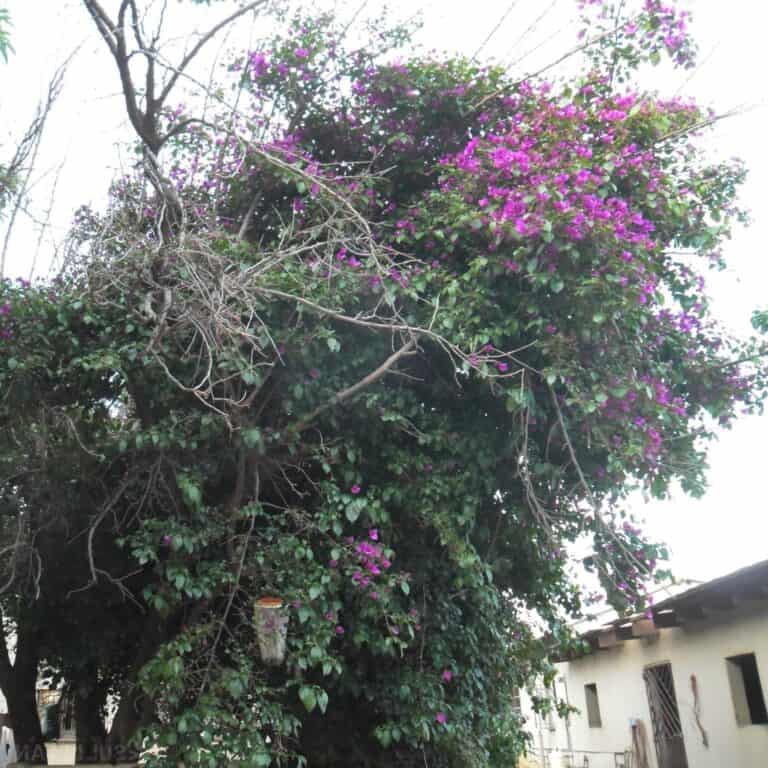
Trees will show more prolific canopy growth and heavier bark on the sun-side of its canopy. These branches will grow up toward the sun. The side with the least exposure to the light will have branches that are more upright and longer as they reach for the sun.
In the Northern Hemisphere, that growth will be denser on the southern side and in the Southern Hemisphere on the northern side.
This diagram shows how a tree might look like in the Southern hemisphere, and is a clearer visual representation of the above photo.
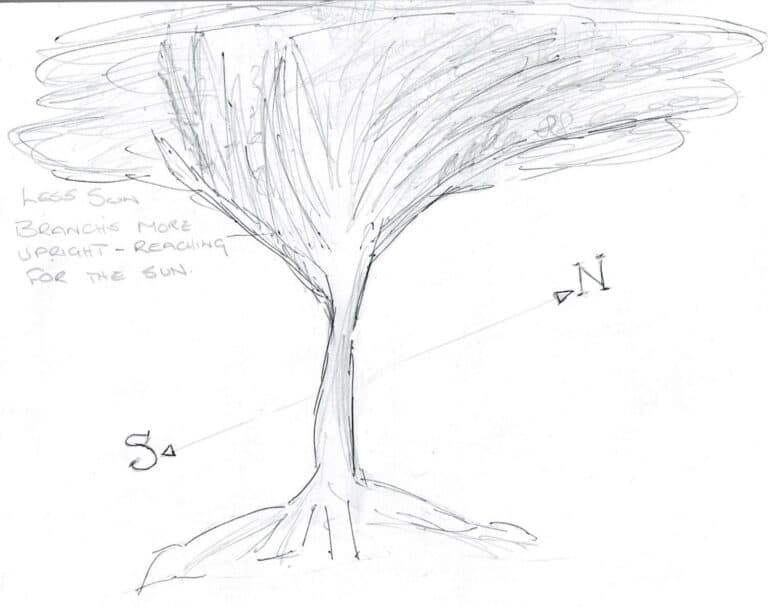
This goes for the fruit of trees and bushes. The riper and more prolific fruit will be on the sun side and follow the hemisphere’s rules. Leaves and new shoots are greener and longer on the sun side.
There is no substitute for experience, so get out there to see for yourself. You don’t even have to go far – the clues are in your own garden or greenspace. It’s about awareness, opening your eyes to the world around you, and getting yourself prepared.

Take a walk around a tree to acclimatize yourself to its growth pattern, how its branches have developed, what its leaves look like, its tree trunk, and the texture. Familiarity will make early identification easier and natural.
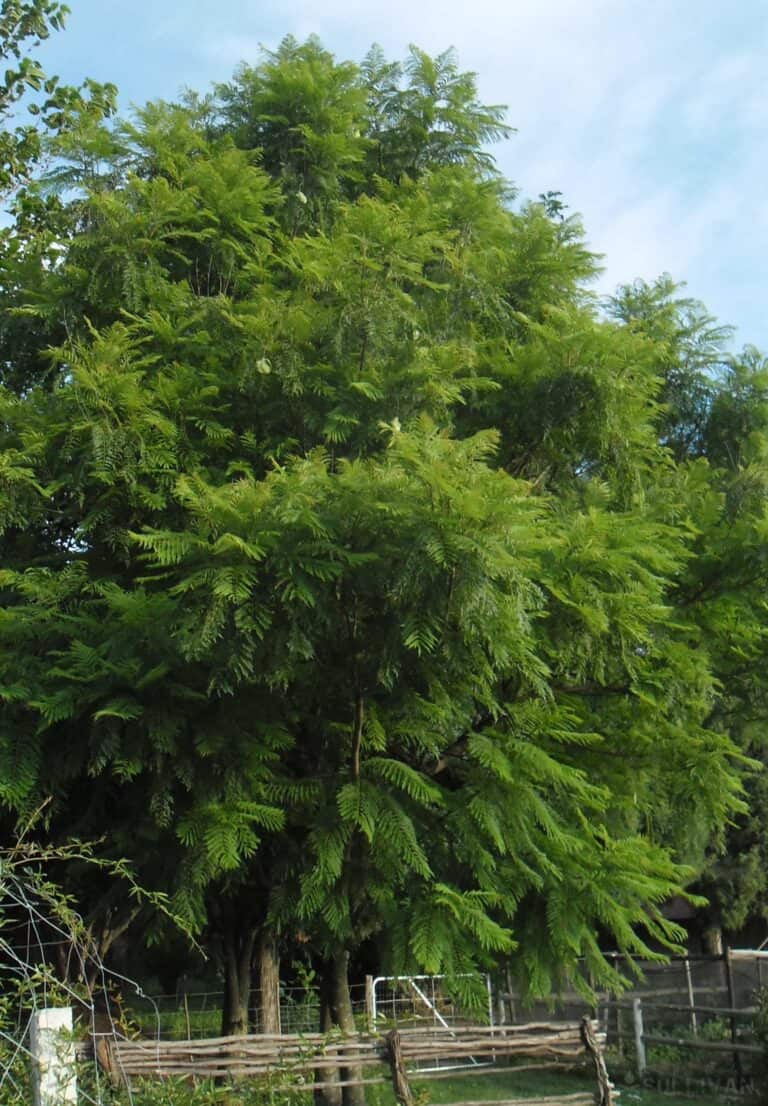
Tree roots, as with branches, can also be an indicator of direction. If the prevailing wind direction is known, the branches will generally bend away from the wind, and the roots will anchor the tree against the prevailing wind, so they will be thicker and more pronounced.
A strong southerly wind will have the branches of trees bending in a northerly direction with pronounced root growth in a southerly direction to stop the tree from being uprooted, pure survival.
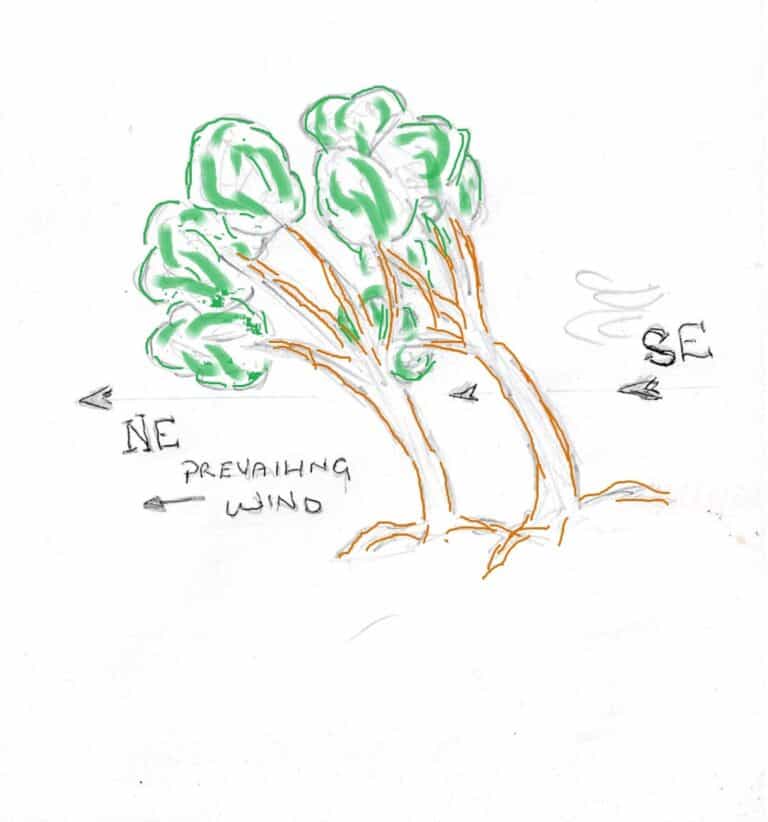
Plants behave in the same way as trees and may be more reliable depending on the terrain. Wind blows from every direction and, as such, if you don’t know what the prevailing wind is you cannot rely on this feature to aid you.
(Drawing and or Photo)
Plants
Flowers, too, are sun worshipers, although some have more mobility than others. In general, flowers will face due east in the morning and by evening will be due west, with north and south being the counterpoints. Flowers will realign themselves during the night to catch the first sun, even if the sky is overcast.
Some plants, like the American Compass Plant (Northern Hemisphere, Silphium laciniatum, Aster family (Asteraceae)), orientate their leaf growth on a north-to-south axis.
When viewed along this axis, they have a very thin profile. When viewed from on a west-to-east axis, they show a broad profile.
In South Africa, in the Southern Hemisphere, similar plants can be found. The Pincushion (Leucospermum oleifolium, Proteaceae) is one of the many protea family species. The flowers of this bush will open towards the sun, harvesting as much sunlight as possible. These flowers will point north.
The Bulbine (Bulbine succulenta), South Africa’s own compass plant, has a wide distribution and is found from the Cape to the Arabian Peninsula.
Its fatty leaves lie flat on the ground, aligning in a north to south direction. Its leaves have medicinal uses, too, and are especially good for the treatment of sunburn, cracked lips, and other skin irritations.
Bear in mind that plants or trees will grow in shady areas, and this will influence their development and their ability to remain “true” to directional form.
Other influencers are groundwater, disease, damage, and soil quality, to name a few. Take into consideration the tree, bush, or plant’s position relative to its surroundings, and look at more than one tree.
Also, take time to consider your surroundings. Patience is a necessity, but don’t procrastinate. Apathy is as big a killer as recklessly heading out into the unknown.
It’s a given that there are no 100% reliable plant direction indicators, yet they can provide hints that will improve your chances, especially on days that are overcast, raining, or in the dense jungle or forest.
Moss, Lichen, and Mushrooms
These three have become a bone of contention among survivalists. Despite the debate it’s clear that from a purely ecological view, moss, lichen, and mushrooms require moisture for their survival.
These three can be found growing either symbiotically or parasitically on trees, rocks, and directly out of the earth. In the Northern Hemisphere, the south-facing side garners the most sun, with the north-facing side the least exposed.
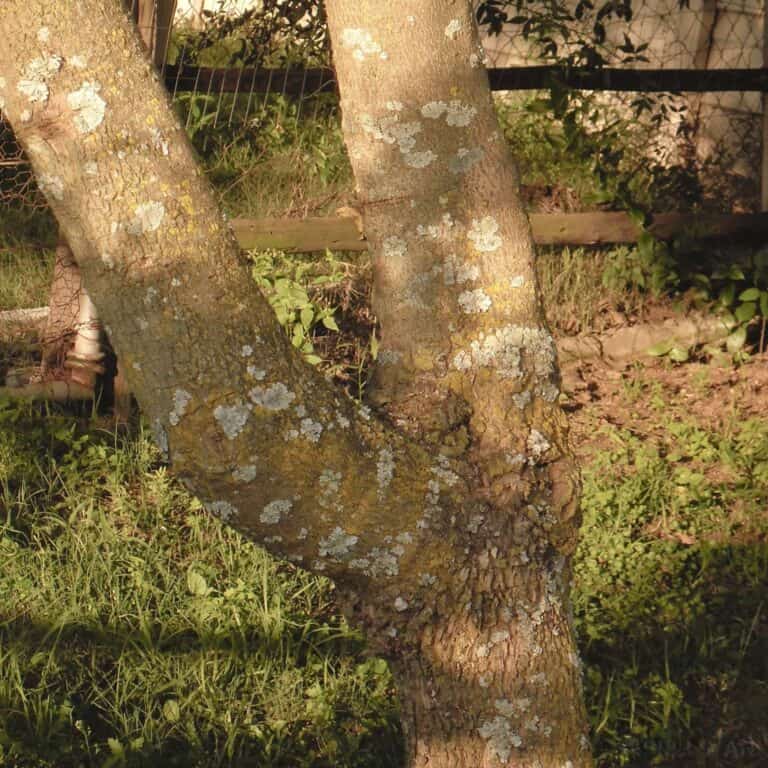
This would translate into more moisture on the northern side of a structure or tree, with moss and lichen being greener or deeper in color than any found on the southern drier side.
Mushrooms can be more prolific, but can also fool you; take a look at the picture here:
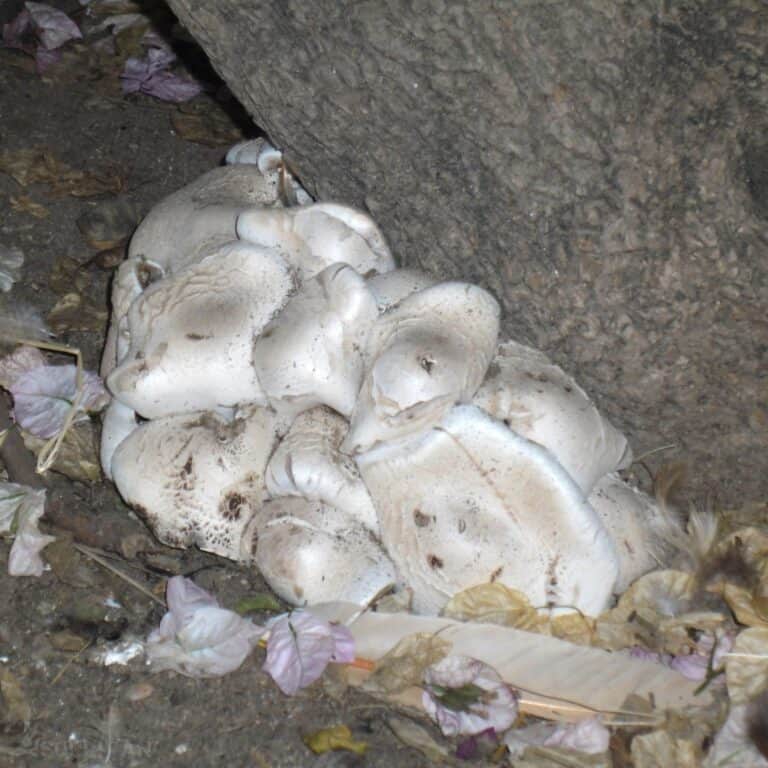
In the picture, the mushrooms are facing north, I am in the Southern Hemisphere, but because they are shaded by the Bougainvillea bush, which is indicating North by its growth.
In the Northern Hemisphere, the opposite is true. The South facing sides get more sun and the north facing more shade.
The picture illustrates the need for caution, nothing can be taken for granted or in isolation.
Look at the color, too. It’s usually deeper and richer on the nutrient-rich, moist side as opposed to any side that gets more sunlight.
Mushrooms are not as sensitive to the sun and dependent on moisture as moss and lichen. Fungi that grow on trees are a better indicator and still fall into the mushroom family.
In the Northern Hemisphere, the northern sides of slopes, rocks, and vegetation are cooler, retain moisture the longest or remain damp for longer.
Mosses, lichens, and mushrooms prefer this type of environment, giving rise to the not totally incorrect belief that they are greener and more profuse on the northern side, hence direction.
However, there is enough variance in the natural world to ensure that this is not a foolproof method and should not be the single means of determining direction.
That said, when you have nothing else, this is a good start till you can support your decision with further indicators.
Insects
My experience in Africa ranges from the wind-swept mountains of the Cape to the tropics of the equator to the deserts of the Sahara. One thing holds true for all of these areas: insects will find a sheltered place to build their home.
Carpenter Bees and Honey Bees in Africa are excellent indicators of direction. They build their respective nests and hives facing the southeast.
In South Africa, the prevailing rainfall comes from the northwest. To protect themselves from damp and mildew or fungus, the entrances face away from the rain.
This would require some self-study. If you were to be hiking in Alaska or Borneo, not everything is a mirror image, as in NH and SH.
Ants will similarly protect themselves from wind and rainfall, as well as the sun or the cold. If heat is harsh, they will seek to cool the nest and maintain the internal temperature. In cooler environments, ants will want to harvest the sun for the same reasons.
The first thing to do is read up on your area. Go out and look for activity in your garden. Befriend the small creatures – they are fantastic teachers.
(Photos)
Birds
Our feathered friends behave in the same way as the insects to some degree; they will build their nests in the shaded and protected side of trees.
In South Africa, it is common to see Masked Weavers in the garden. This bright yellow weaver with a black mask and red eye is a striking bird, widespread, and a prolific nest builder.
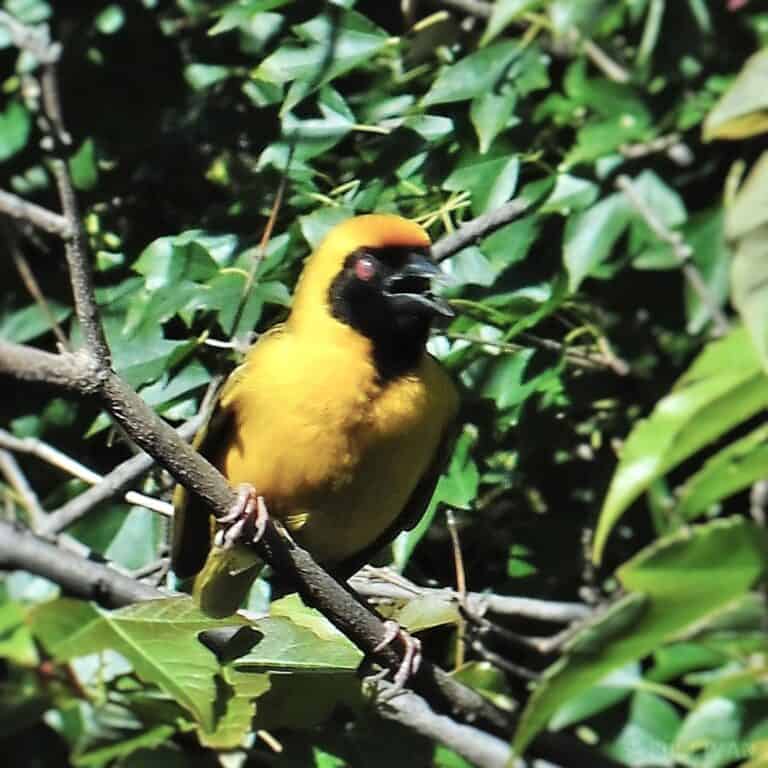
They build their nests on the southeastern side of trees, buffering their home from stormy winds and rain:
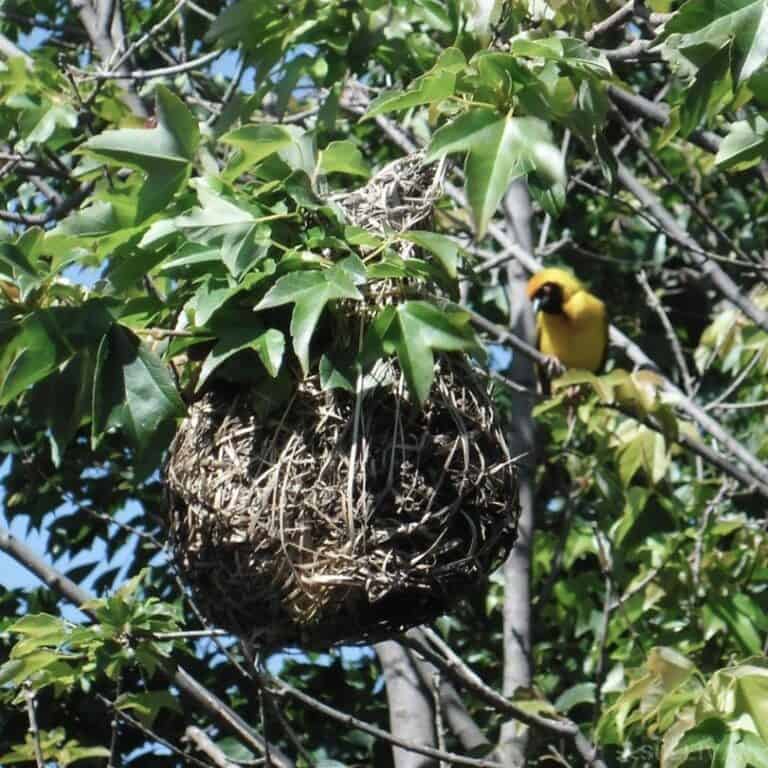
High winds claim many chicks every year, so building a home in the protective lee of the tree will give them the best chance of survival and give us a clear directional marker.
It’s long been known that animals have an internal compass used to find direction based on magnetic north. In a fascinating Czechoslovakian study published in Frontiers of Zoology, it was found that waterfowl will, outside of wind direction, align themselves for landing on a north-south axis.
Study the birdlife in your garden. Read up about them and see how they live. This is primitive knowledge. It’s what early humankind relied on at the beginning of the climb up the survival ladder.
Other Animals
Animals also have built-in navigation systems. In a study conducted in Germany; researchers discovered that deer align themselves towards magnetic north when grazing.
This same orientation was observed and recorded in domestic cattle. The team used Google Earth Satellite photos to analyze herds of deer and cattle and to verify their initial findings.
In another study by the same Czechoslovakian research group that brought you duck landings, it was found that dogs align themselves on a north-south axis when they poop. The stuff scientists do!
As a professional hunter, I gained a lot of experience in the bush, watching the behavior of animals. For the most part, they need to drink at least twice a day, and the bigger they are, the more they will need.
Some birdlife is very predictable, finding water daily. While some are able to find water in the bowls of trees or plants (as Juliane did), many travel to seek it. Sand grouse, for example, will travel great distances daily to drink at a water source.
Most do this in the early morning and late afternoon. Following them will, at a minimum, lead you to water for survival. In the best case, they will lead you to a moving water source.
Bathroom behavior aside, dogs and horses can find their way home over great distances. If you are lost with your animals, they may well be the solution to finding the way home.
Both of these species have a highly developed sense of smell and use odor clues left behind to backtrack.
Confined animals, however, may have issues finding their way home as they also use visual clues and reference points, studies have found.
So, get out with your animals regularly. It’s good for you and builds your exposure to nature and the bond you develop with your animals.
Rivers
Water is more than just something to drink; it can lead the way to civilization. As discussed, earlier, streams and rivers can lead you out of a life-threatening situation and return you to safety, as in Juliane’s case.
In the case study, we saw that Juliane found her way home via the waterways of the Peruvian jungle. This applies to most situations. Small creeks or spring water lead to streams, streams lead to rivers, rivers lead to lakes and the sea.
Human settlements are likely to be found along these water systems, depending on the remoteness of the location. In most instances, it is likely that human habitation would be established near a solid water source where water, food, and transportation are readily available.
In Juliane’s case, the jungle was filled with water sources that helped her to find her way out. In other parts of the world, the topography or terrain you find yourself in will differ.
Determine the water’s direction by floating something out and then take that line on your walk out of your predicament.
Concentrations of trees and green growth, as discussed earlier, are vital clues to finding the water source.
Enough theory, let’s take a practical look at a survival scenario from real life.
Juliane Koepcke: A Case Study in Survival
Juliane was a 17-year-old air crash survivor who walked out of the Amazon jungle two weeks after she was presumed dead, lost with the other passengers of a flight that went down in Peru in the early 1970s.
In what was a grueling walk to freedom, Juliane followed some basic principles of survival, finding her way using orientation skills taught to her by her mother in their early days of a zoology study in the Peruvian jungle.
Her parents feared she might wander off into the jungle, become disorientated, and get lost. Instead of forbidding her from going into the forest, they taught her, with the help of local tribes-people, how to survive, what to do if she became lost, what “language” the jungle spoke, to interpret the sounds and movement of birds, animals, insects and plants.
I will go through the story, in summary, looking at what she did right and how you can use her experience to find your way home in a similar situation.
Christmas Eve December 1971, Flight 508 from Lima was to be a happy reuniting with her father. Juliane and her mother were 25 minutes into a 40-minute flight to Pucallpa when the plane was struck by lightning, causing the aircraft to come apart in midair.
Planning
Juliane was torn from the plane and fell 2 miles into the jungle canopy, which broke her descent and contributed to saving Juliane. Her injuries were relatively minor, considering the air crash killed everyone on board, including her mother.
A broken collarbone and some deep cuts would hinder her struggle for survival. Nevertheless, she would not surrender despite being alone.
Self-Assessment
Regaining consciousness on the jungle floor, it took her a day to gather herself. She searched for any survivors and any possible resources she could find. The crash site was spread over many miles, and she soon realized she was alone.
Orientate Yourself
In her own words:
“What I experienced was not fear but a boundless feeling of abandonment.”
– Juliane Koepcke in her book, When I Fell from the Sky
She could hear the search aircraft above, but with the jungle canopy so thick, it obscured any visual markers that could have led to her rescue.
With no compass or map to guide her, Juliane at least had a general idea that she was in the Peruvian jungle.
Adding to her woes, she had lost her glasses, and being near-sighted, she couldn’t define objects close by. With only one shoe, a packet of candy she had found while searching, and her thin summer dress, she set off to find her way home.
Juliane didn’t create a map, per se. She did, however, understand where she was and knew the jungle’s “language.” This is, in itself, a map, a guide. By following the watercourse, she found people who did know the area and could assist her.
What Do You Have?
Having knowledge of the jungle, she sucked rainwater from the leaves, stuck to game paths using her one clad foot to test the ground ahead. It was painstakingly slow progress, but soon she came across a small creek.
Following the creek, it soon became a stream, and that stream led her to a river.
Using Accumulated Knowledge
Adding to her sense of abandonment was the cessation of the search; the planes stopped flying over the crash area. She decided she was too young to die. Julian hadn’t truly lived yet, and that provided motivation, the will to survive.
Keeping a Cool Head
Staying the course, she battled hunger, insects, and infection of her wounds. She had a maggot infestation in her arm, and walking became progressively worse as her sprained ankle gave in.
On her route out, she discovered the bodies of passengers, now the property of the jungle and its vultures and other inhabitants.
The phycological effect was devastating. She fully expected to find her mother, who had actually survived the fall from the air. Sadly, she was too injured to move, and she had succumbed eventually to her injuries, the lack of medical attention and sustenance.
To take the pressure off her ankle, Juliane used the streams, where they were deep enough, to float downstream and then into the river. Taking her chances in the water of the river, infested with caimans, she continued on her downward path.
What Can You Do?
Eventually, she found a boat in the water. The boat path to the water led to a forester’s camp, where she found a small hut for shelter, as well as a drum of fuel. She remembered seeing her father treat a maggot infestation on their dog at the jungle research station with kerosene.
She poured gasoline into her own wound to treat it in the same way. She was soon able to remove the maggots as they tried to escape the fuel.
On the following day, the foresters returned to camp to find her there. Juliane told them her survival story, they treated her further, and fed her. They later transported her down the river to civilization, where she was airlifted to Pucallpa for treatment and to reunite with her father.
There are countless tales of survival like this, and each one provides valuable lessons.
It’s never too early or too late to learn the necessary skills for survival. Not all of us have had the benefit of instructive parents or local tribes’ people to teach us the necessary skills, not to mention a wilderness area in which to learn.
Your garden, local parks, and natural areas close to your home can be your teacher. How can you take these lessons and apply them to your own survival skills?
Lessons Learned:
- Keep a cool head
- Assess yourself
- Cope with reality
- Search for resources
- Find other survivors
- Use what you’ve got
- What do you know?
- Follow the water
- You will have to take risks
- People, in general, are good
Key Takeaways
Education is the meat and potatoes of natural navigation and its utilization for your survival, use your local library.
Join an Orienteering or Hiking group in your area; most are eager to impart their knowledge and help you experience nature in a safe way. Use all the tools at your disposal to check your learning.
Exposure is the key that unlocks education. Get out into nature as much as you can, especially with experienced bushpeople, they will help you trouble shoot problems and clarify concepts. Your introduction to natures navigational guide book will take you on a voyage of discovery.
Remember:
- Orientate
- Rivers
- Trees
- Plants
- Birds
- Insects
- Animals
Focus On:
- Start small and use what you have
- Study the Trees, Plants and Mosses or Lichens that occur in your garden
- Verify with a compass and a map
- Get out into Nature as much as you can and use your knowledge
- Urban Areas Prune and Cut back trees – this will affect their development
- Read up on the birdlife and animals that are endemic (occur naturally) to your area
- Patience and calm will help you absorb knowledge and keep you focused
At the end of the day, if you find yourself lost, a little planning and knowledge will allow you to remember the words of the poet Rudyard Kipling, and keep your head and trust yourself, even if all about you are losing theirs and doubting you.
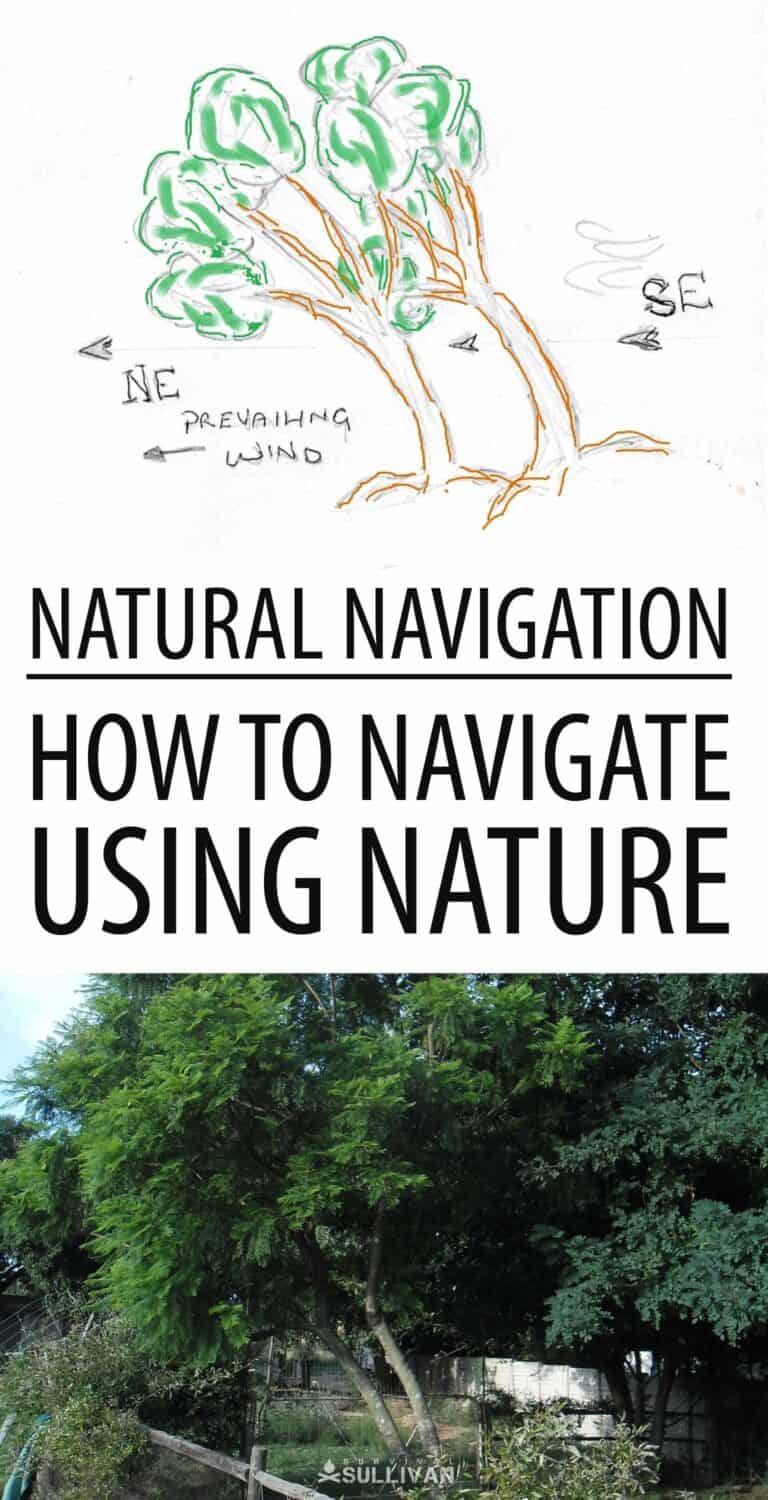

Harrison Caine is a soldier, a hunter, a trained expert in hand-to-hand combat, hunting. He’s trained soldiers, fought wars, and provided defense services to refugees and U.S. officials. His experience in tough wilderness scenarios is unmatched

An interesting article, however the most important thing when traveling is to make sure at least 2 responsible people know where you are going and what route you are taking, check with them every 2 hours and report any changes in direction and call them when you arrive. Without anyone knowing where you are means NO RESCUE. Becaues no one knew where he was going that poor chap had to cut his own arm off in the desert.
Wow! Thank you so much for this article!!!
Great article, it is scarey, how un-connected we have become from the natural environment these days. I just sort of absorbed a lot of this information while growing up, in spite of not having a particularly ‘wild’ life.
They should teach the basics I school.